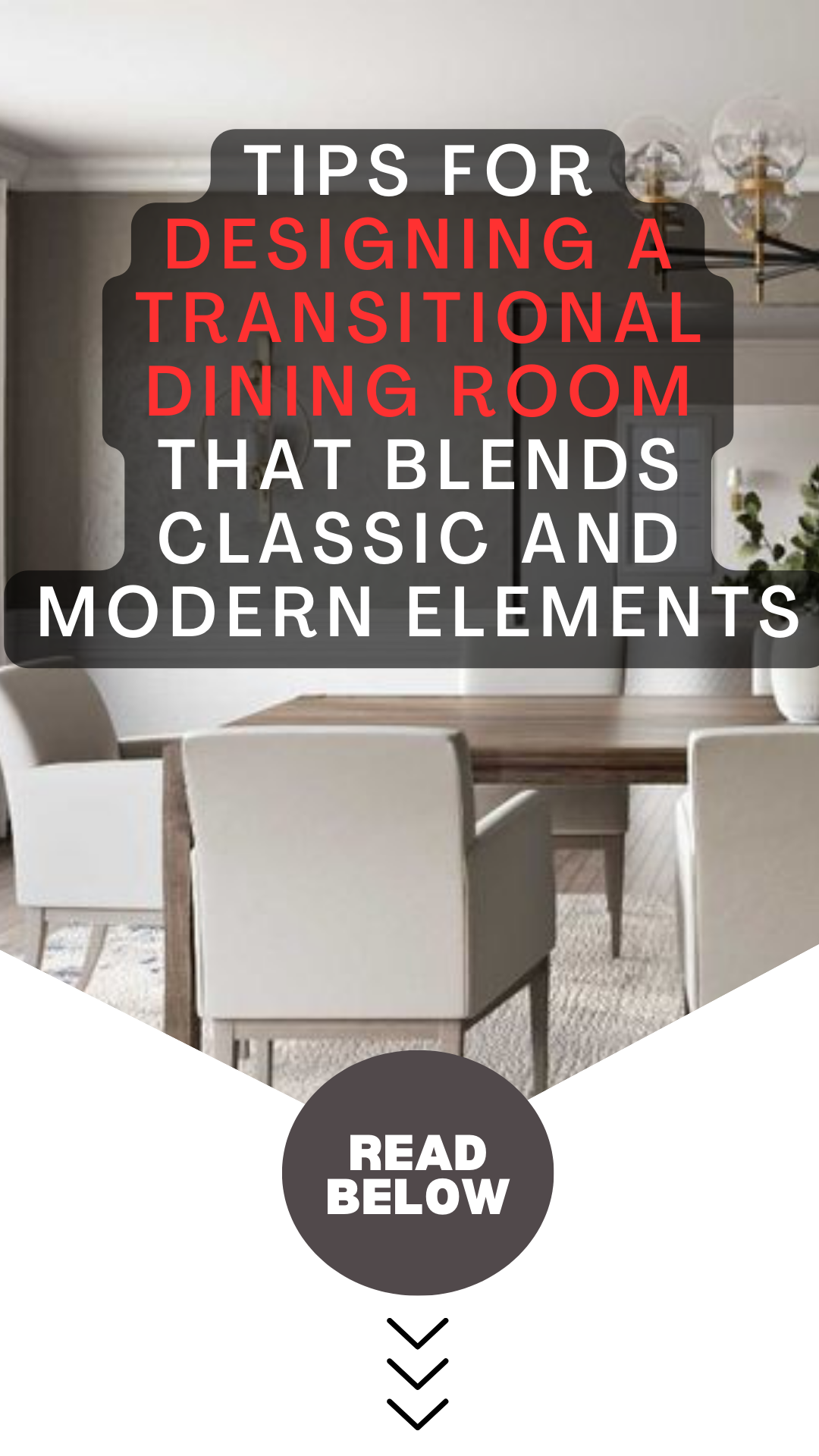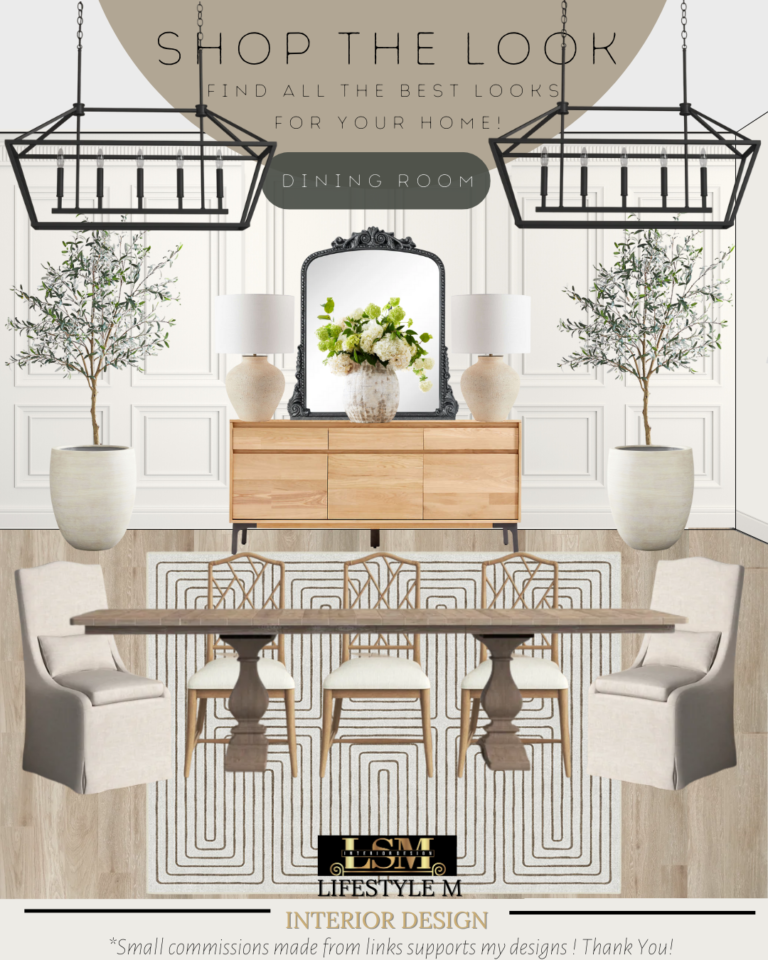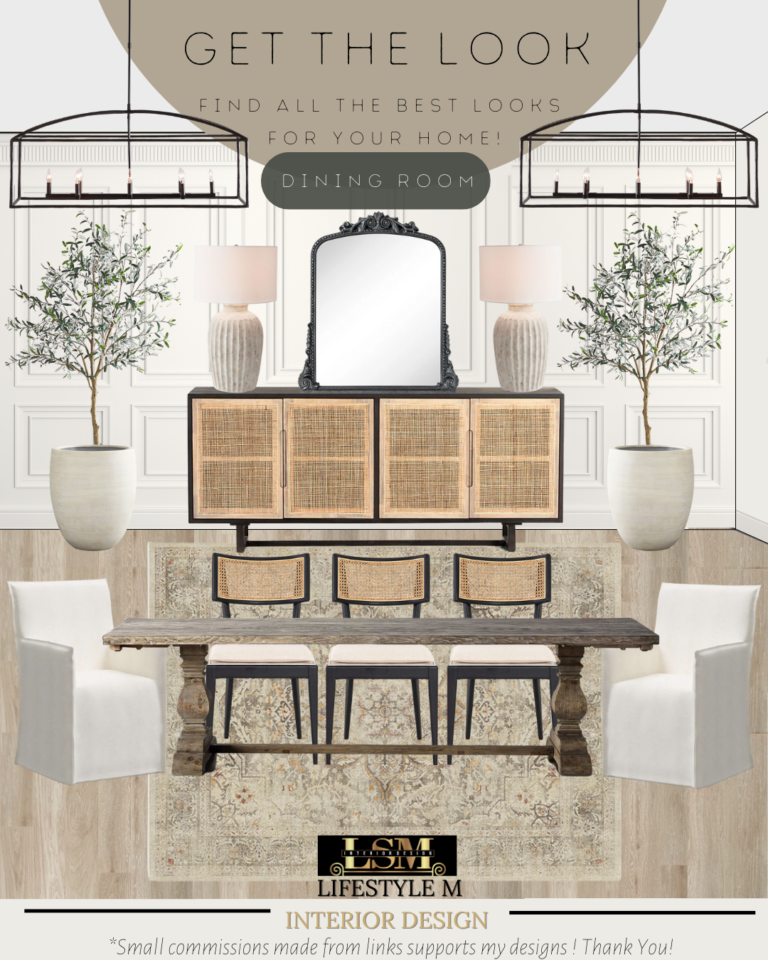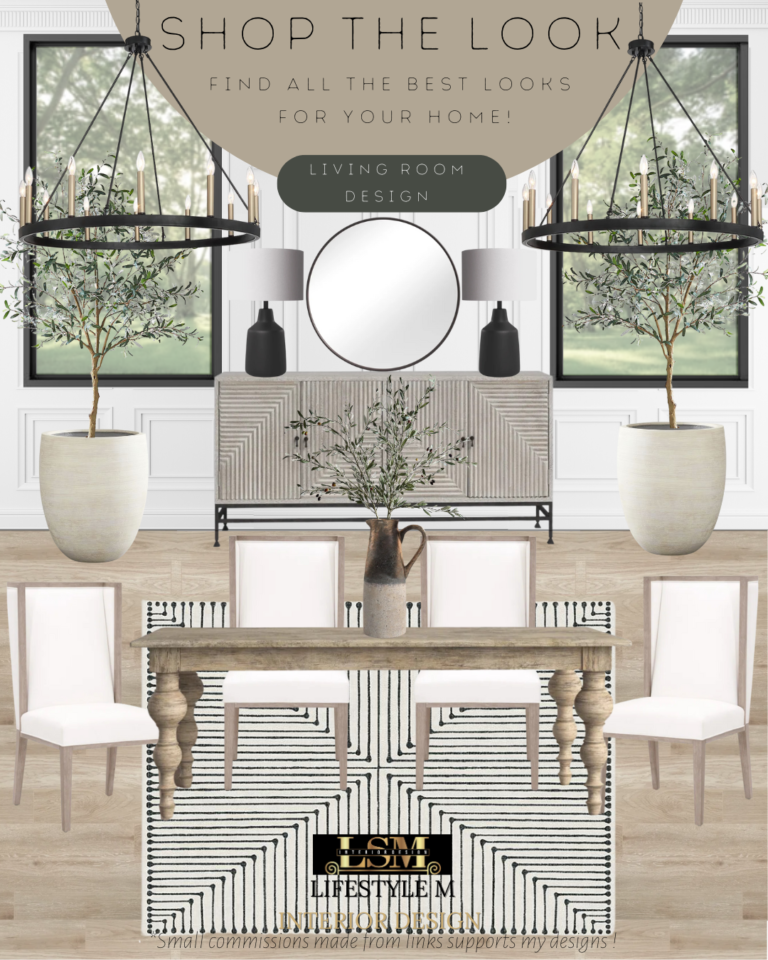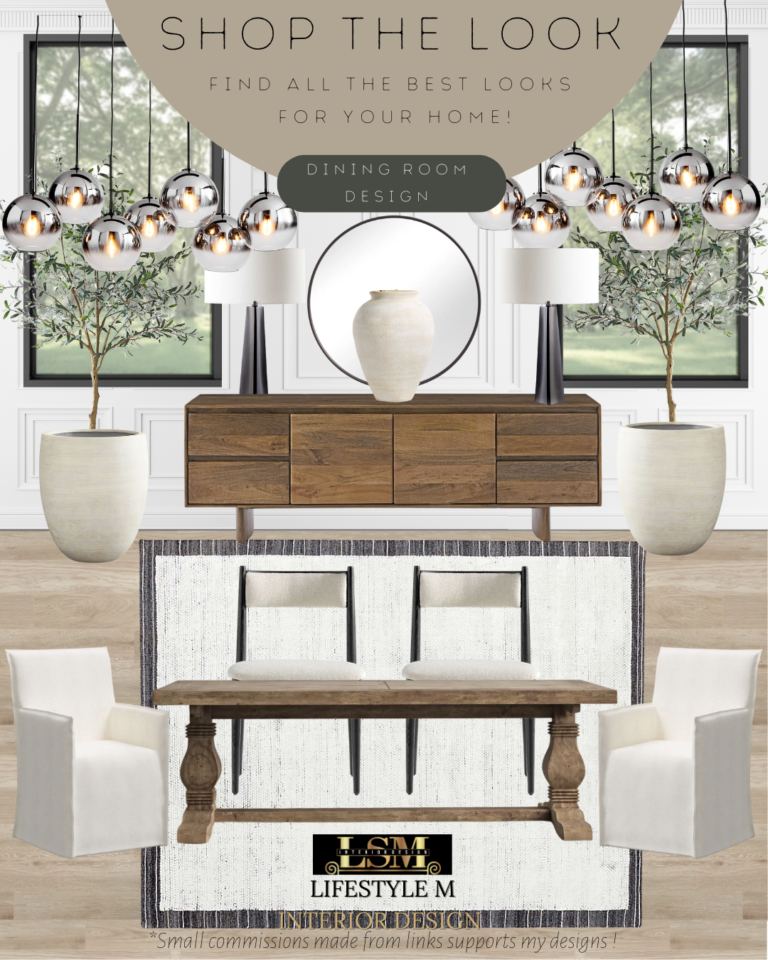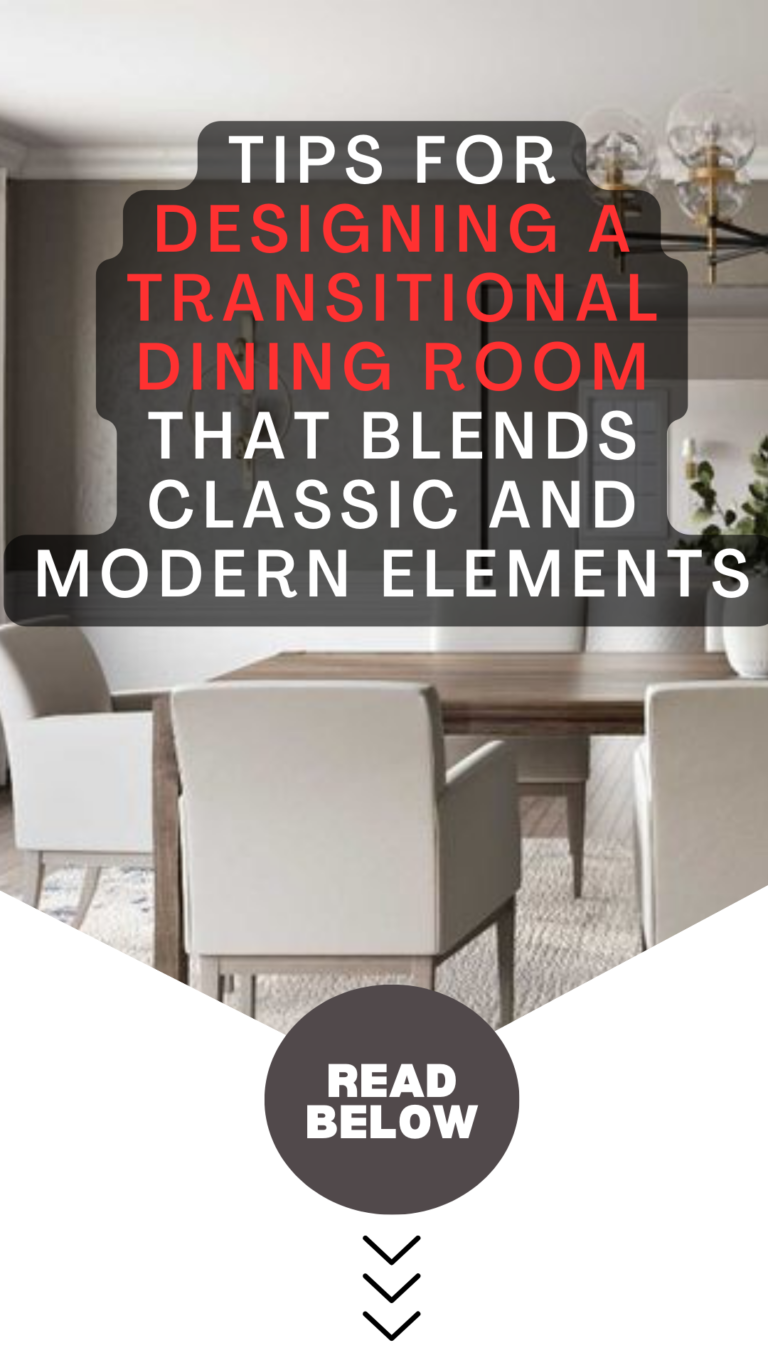
Lifestyle M Interior Design
Tips for Designing a Transitional Dining Room That Blends Classic and Modern Elements
As a lover of design, I have always been fascinated by the idea of blending classic and modern elements to create a transitional style that is both timeless and fresh. When it comes to designing a dining room, this approach can be particularly effective in creating a space that is both formal and inviting. In this article, I will share some of my tips for designing a transitional dining room that blends classic and modern elements, from the importance of a neutral color palette to the role of lighting in creating a statement.

Introduction to Transitional design
Transitional design is all about creating a space that blends traditional and modern elements to achieve a timeless yet fresh look. In a dining room setting, this can be achieved by combining classic pieces such as a traditional dining table with modern chairs or vice versa. The key is to strike a balance between the two styles so that they complement each other rather than clash.
Key elements of Transitional design in dining room decor
If you want to create a dining room that’s the perfect blend of classic elegance and modern comfort, then you should definitely consider transitional design. This style is all about combining traditional and contemporary elements to create a space that’s both formal and inviting.
To achieve this balance, you’ll want to use a neutral color palette as the foundation for your decor. This will help to create a sense of calm and harmony, while also allowing your furniture and accessories to really shine. You can then mix and match different styles and textures to create a layered look that’s both interesting and cohesive.
When it comes to your dining room specifically, the focus should be on creating a space that’s comfortable and welcoming for your guests. After all, this is where you’ll be sharing meals and making memories with the people you love! But at the same time, you don’t want to sacrifice style or sophistication.
So, think about incorporating comfortable seating, soft lighting, and cozy textures to make your dining room feel like a welcoming haven. And don’t be afraid to add a touch of glamor or luxury with elegant lighting fixtures, fine china, or eye-catching artwork. With a little bit of creativity and a lot of attention to detail, you can create a dining room that’s the perfect reflection of your personal style and taste.
The importance of a neutral color palette
Picture yourself in a beautiful dining room, surrounded by elegant furniture, stylish decor, and delicious food. The atmosphere is warm and welcoming, yet sophisticated and refined. What’s the secret to creating this perfect balance of comfort and class? It’s all about the color palette!
Transitional design emphasizes the use of neutral colors to create a sense of harmony and equilibrium in the space. By sticking to a palette of soft, natural hues like beige, gray, and white, you can create a cohesive and timeless look that’s both soothing and stylish.
In a dining room setting, this is particularly important, as you want to create an environment that’s comfortable and inviting, while also setting the stage for a special occasion or intimate gathering. Whether you’re hosting a fancy dinner party or enjoying a casual family meal, a neutral color scheme will provide the perfect backdrop for any occasion.
So, if you’re looking to create a dining room that’s both elegant and inviting, don’t underestimate the power of a neutral color palette. It’s the foundation of transitional design, and the key to creating a space that’s both beautiful and functional.
How To Mixing traditional and modern elements
Picture this: a stunning dining room that seamlessly blends classic elegance with modern chic. This is the magic of transitional design, where traditional and contemporary elements come together in perfect harmony. The key is to strike a balance between the old and the new, so that they complement each other instead of competing for attention.
One way to achieve this is by mixing classic pieces like a traditional wooden dining table or a grand chandelier with modern chairs in bold, unexpected colors. Alternatively, a sleek, minimalist table could be paired with a vintage rug or a traditional crystal light fixture. The possibilities are endless, but the key is to create a cohesive look that celebrates both the past and the present.
Transitional design allows you to showcase your personal style while still honoring the history and craftsmanship of classic pieces. It’s a beautiful way to infuse your home with a sense of sophistication and timeless elegance, while also reflecting your contemporary tastes.
Creating a statement with lighting
Lighting is a crucial component in setting the mood and tone of any room, and the dining room is no exception. In a transitional design, lighting can serve as a statement piece that adds an extra layer of style to the space. Whether you opt for a sleek and modern pendant light or a classic and ornate chandelier, your lighting choice can make a big impact on the overall aesthetic of the room.
If you’re looking to incorporate modern elements into a more traditional dining room, a modern chandelier or pendant light can be the perfect solution. Not only will it add a contemporary touch to the space, but it can also provide a unique and eye-catching focal point.
On the other hand, if you have a more modern dining room and want to add a touch of classic elegance, a traditional chandelier can be the perfect choice. It can add a sense of sophistication and refinement to the space, creating a welcoming and inviting atmosphere.
The key to incorporating statement lighting in a transitional design is to choose a piece that complements the rest of the decor. You want your lighting choice to enhance the overall aesthetic of the room, rather than detracting from it. By finding the right balance between classic and modern elements, you can create a stunning and cohesive dining room design that is sure to impress.
Incorporating natural textures
When it comes to designing a dining room, one of the most crucial aspects is creating a warm and inviting atmosphere. That’s where natural textures come in! Incorporating materials such as wood, stone, and metal can give your space a cozy and inviting feel, while also adding a touch of sophistication. These materials not only provide texture and depth to the space, but they also work in harmony with both classic and modern elements.
So, if you want to add some natural textures to your dining room, consider adding a stunning wooden dining table as the centerpiece, or maybe try out some stone or concrete flooring to give the room a natural, earthy feel. And don’t forget about metal accents! A statement chandelier or light fixture can add a touch of elegance and sophistication to the space while still keeping it grounded and warm.
Comfortable seating options
When it comes to dining, comfort is key, and that’s especially true in a transitional design. Luckily, with the right seating options, you can have both comfort and style in spades. Upholstered chairs or benches are a great way to add a touch of luxury and softness to your dining room. Not only do they create a more welcoming atmosphere, but they also complement the classic and modern elements of transitional design.
For an even more interesting look, consider mixing and matching different seating options. A combination of chairs and benches not only adds visual interest but can also create a more casual and relaxed vibe. You can play with different shapes, textures, and colors to achieve a cohesive yet eclectic look. The key is to find pieces that balance each other and enhance the overall feel of your dining space.
Accessorizing with artwork and decor
When it comes to decorating a dining room, it’s the little things that can really make a big impact. In a transitional design, the accessories and decor are no exception. With the right selection of artwork, decorative objects, and textiles, you can add just the right amount of color, texture, and visual interest to your space. These items not only complement the classic and modern elements of the room, but they can also help tie the whole look together.
A large piece of artwork can really make a statement in a dining room, drawing the eye and creating a focal point for the space. And who doesn’t love a unique decorative object? A standout piece can add personality and charm to the room. Whether it’s a striking sculpture or an interesting vase, the right decorative item can be a conversation starter and really set the tone for the space.
And don’t forget about textiles! With the right choice of tablecloth, placemats, and napkins, you can add just the right amount of color and texture to your dining table. These small details can really make a big impact on the overall look and feel of the room. So, have fun with your accessories and decor, and let your personality shine through!
Conclusion
Designing a transitional dining room that blends classic and modern elements is all about finding the right balance between the two styles. Through the use of a neutral color palette, natural textures, comfortable seating, and statement lighting, you can create a space that is both formal and inviting. Additionally, the use of flexible and adaptable furniture and decor can make entertaining guests a breeze. With these tips, you can achieve a timeless yet fresh look in your dining room that is sure to impress.

